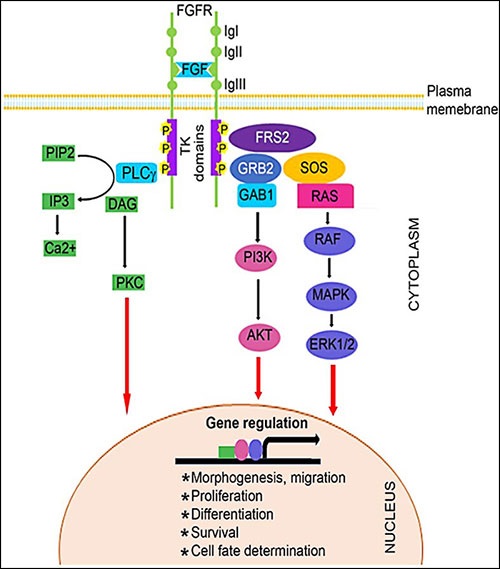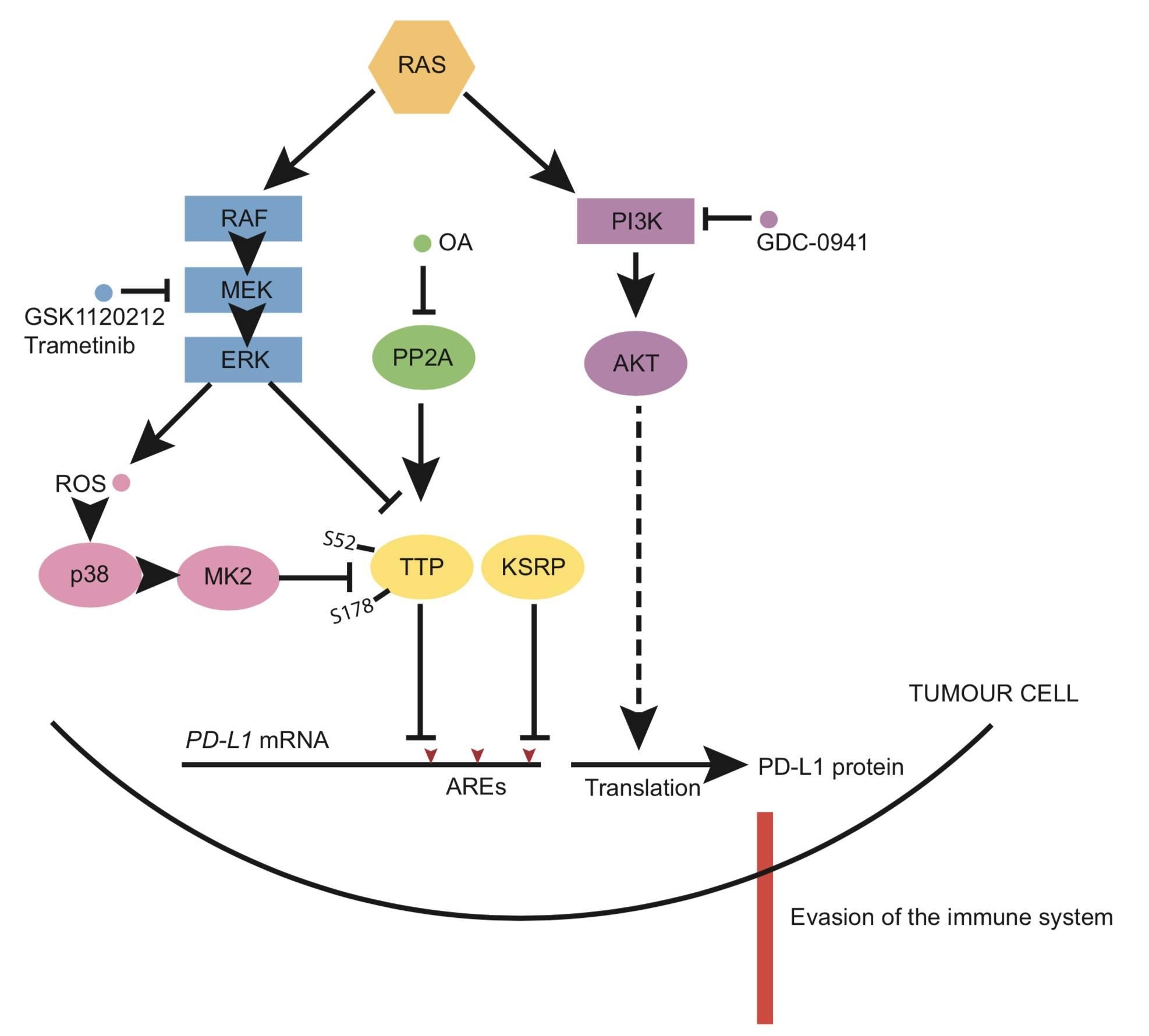仑伐替尼是一种酪氨酸激酶受体(RTK)抑制剂,它抑制的激酶包括 1. 血管内皮生长因子受体VEGFR1 (FLT1) 2. VEGF2 (KDR) 3. VEGFR3 (FLT4), 4. 同时也抑制其他与致病性肿瘤血管生成、肿瘤细胞生长和对正常的细胞功能的肿瘤发展相关性的 RTKs包括成纤维细胞生长因子受体FGFR)1,2,3 和 4,血小板衍生生长因子受体 α(PTGFRα),KIT 和RET 。  RET (Rearranged during transfection)基因
什么是RET
RET属原癌基因,负责编码一种称为RET的跨膜蛋白,该蛋白属于一种受体酪氨酸激酶。跨膜蛋白分为三个部分:蛋白的一端位于细胞外,一部分位于细胞膜中,另一端则位于细胞内。当RET蛋白与其配体——细胞外信号分子家族的胶质细胞源神经营养因子(Glial cell line derived neurotropic factor, GDNF)结合时,其将引起RET蛋白受体的磷酸化并使RET进入激活状态。被激活的RET将磷酸化其底物,造成下游信号通路的激活。[2]
RET蛋白参与的信号通路包括PI3K-AKT-mTOR途径以及RAS-RAF-MEK-ERK途径。PI3K-AKT-mTOR途径参与细胞存活,而RAS-RAF-MEK-ERK通路参与细胞增殖。因此RET蛋白在细胞存活、迁移、增殖上有着一定的作用。[2]
 RET基因发生致病性突变——突变或重排,进而激活RET基因,并可能编码出具有异常活动的RET蛋白,其将传递异常信号并造成多方面的影响:包括细胞生长、生存、侵袭、转移等。持续的信号传递会造成细胞的过度增殖,因此导致肿瘤的发生与进展。[1,2]
[1]NCBI Gene. Retrieved from: https://www.ncbi.nlm.nih.gov/gene/5979
[2]Espinosa, A., J. Gilbert. 2015. RET. My Cancer Genome. Retrieved from: https://www.mycancergenome.org/content/disease/lung-cancer/ret/?tab=0 (Updated December 7).
VEGFR (Vascular Endothelial Growth Factor Receptor)血管内皮细胞生长因子受体;血管内皮生长因子受体;可溶性血管内皮生长因子受体;血管内皮细胞生长因子
 肿瘤新生血管形成中的VEGF与VEGFR[1] 盘点作用于VEGFR的15种分子靶向药物
本文盘点的是作用于VEGFR的分子靶向药物,而非VEGF抑制剂(比如贝伐珠单抗),包括一些已经获批用于治疗的药物(其中部分药物尚未在中国上市),也包括一些处于试验阶段,有比较良好的治疗前景的药物,还包括一些已经在临床试验中获得阴性结果的药物。
1. Giordano G , Febbraro A, Venditti M, etc. Targeting Angiogenesis and Tumor Microenvironment in Metastatic Colorectal Cancer:Role of Aflibercept. Gastroenterol Res Pract. 2014;2014:526178.
2. Cainap C, Qin S, Huang WT , etc. Linifanib versus Sorafenib in patients with advanced hepatocellular carcinoma: results of a randomized phase III trial.J Clin Oncol. 2015 Jan 10;33(2):172-9.
3. McKeegan EM, Ansell PJ, Davis G , etc. Plasma biomarker signature associated with improved survival in advanced non-small cell lung cancer patients on linifanib.Lung Cancer. 2015 Nov;90(2):296-301.
4. Morabito A , Piccirillo MC, Falasconi F , etc.Vandetanib (ZD6474), a dual inhibitor of vascular endothelial growth factor receptor (VEGFR) and epidermal growth factor receptor (EGFR) tyrosine kinases: current status and future directions. Oncologist. 2009 Apr;14(4):378-90.
5. Melichar B, Studentová H, Zezulová M .Pazopanib: a new multiple tyrosine kinase inhibitor in the therapy of metastatic renal cell carcinoma and other solid tumors. J BUON. 2011 Apr-Jun;16(2):203-9.
6. Jamil MO, Hathaway A , Mehta A. Tivozanib: status of development.Curr Oncol Rep.2015 Jun;17(6):24.
7.Shaohua Ge, Dingzhi Huang,Systemic therapies for hepatocellular carcinoma .Drug Discoveries & Therapeutics. 2015; 9(5):352-362.
8.Masayuki Takeda, Isamu Okamoto , and Kazuhiko Nakagawa.Clinical development of nintedanib for advanced non-small-cell lung cancer. Ther Clin Risk Manag. 2015; 11: 1701-1706.
9. Wolfgang Hilbe, Christian Manegold, Andreas Pircher.Targeting angiogenesis in lung cancer - Pitfalls in drug development.Transl Lung Cancer Res.2012;1(2):122-128
|

|

